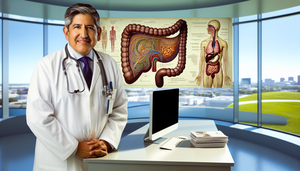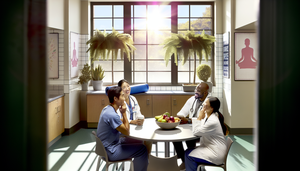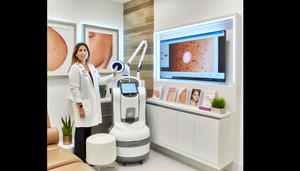
Prostate Cancer: Prognostic Factors and Life Expectancy Across Stages
Explore how prognostic factors influence survival in prostate cancer across different stages.
Read more
Prognosis and Survival in Anal Cancer: Key Prognostic Factors for Clinical Management
Explore how tumor differentiation and nodal status impact survival in anal cancer.
Read more
Gallbladder Cancer: Prognosis, Life Expectancy, and Key Survival Factors for Specialists
Explore how advancements in minimally invasive techniques are improving the prognosis of gallbladder cancer.
Read more
Liver Cancer: Key Insights into Prognosis, Survival, and Hepatocellular Carcinoma Life Expectancy
Discover how advancements in technology and genomics are enhancing the prognosis and survival rates of hepatocellular carcinoma.
Read more
Pancreatic Cancer: Prognosis, Survival Rates, and Key Prognostic Factors
The integration of biomarkers and molecular factors enhances prognosis and survival in pancreatic cancer.
Read more
Esophageal Cancer Prognosis and Life Expectancy: Key Prognostic Factors Influencing Survival
Explore how early detection and personalized treatment enhance survival in esophageal cancer.
Read more
Gastric Cancer Prognosis and Survival: Evaluating Clinical Stages and Key Prognostic Factors
The integration of biomarkers and novel therapies enhances the prognosis and survival of gastric cancer.
Read more
Colorectal Cancer Prognosis: Key Prognostic Factors and Life Expectancy for Medical Practice
Explore how prognostic factors influence survival and life expectancy in colorectal cancer.
Read more
Mesothelioma Prognosis and Life Expectancy: Key Factors for Pleural Tumor Survival
Pleural mesothelioma has an unfavorable prognosis, but early detection and combined therapies can improve survival.
Read more
Small Cell Lung Cancer: Survival Evaluation and Prognostic Factors for Improved Life Expectancy
Explore how molecular classification and immunotherapy promise to enhance the prognosis of SCLC.
Read more
Prognosis and Survival in Non-Small Cell Lung Cancer: Current Perspectives on NSCLC Life Expectancy and Prognostic Factors
Explore how targeted therapies and immunotherapies are transforming the prognosis of NSCLC.
Read more
Melanoma Prognosis and Life Expectancy: Understanding Risk Factors and Stages for Improved Skin Cancer Survival
Discover how risk factors and stages of melanoma impact survival and treatment outcomes.
Read more
Prognosis and Life Expectancy in Squamous Cell Carcinoma: Key Factors for Effective Skin Cancer Survival
Early detection and appropriate treatment are crucial for improving survival in squamous cell carcinoma.
Read more
Prognosis and Survival in Basal Cell Carcinoma: Key Factors for Clinical Management and Skin Cancer Outcomes
Discover how prognostic factors influence the management and survival of basal cell carcinoma.
Read more
Breast Cancer Prognosis and Life Expectancy: Key Prognostic Factors for Clinical Practice
Explore how key factors and prognostic tools personalize breast cancer treatment.
Read more
Clinical Leadership: Essential Managerial Skills for Effective Team Management and Internal Communication
Effective clinical leadership enhances team management and optimizes patient care.
Read more
Continuing Medical Education: Accredited Courses for Professional Development and Certification Options
Discover how continuing medical education transforms clinical practice and enhances patient care.
Read more
Preventing Medical Burnout: Strategies for Self-Care and Work-Life Balance in Healthcare Professionals
Discover effective strategies to prevent physician burnout and enhance professional mental health.
Read more
Essential Neurology: Recognizing Stroke Warning Signs and Multidisciplinary Acute Management
Discover how a multidisciplinary approach optimizes stroke management and enhances recovery.
Read more
Innovations in Dermatology: Early Diagnosis and New Treatment Options in Clinical Cases
Discover how innovations in dermatoscopy and advanced therapies are transforming modern dermatology.
Read more